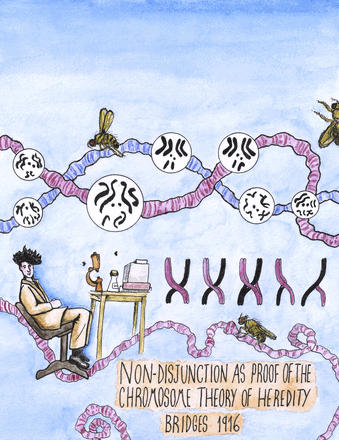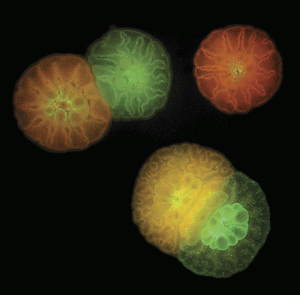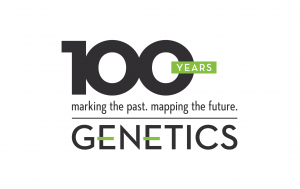Enter your address to receive notifications about new posts to your email.
Science & Publishing
-
Science & Publishing
Sequencing so fast you’ll think you’re on CSI:
If you’ve ever watched a procedural crime-solving show on television, you’re sure to have seen a lab tech magically produce results from a complicated assay in mere minutes. If you’re a wet lab scientist, you’ve probably found yourself wishing that “CSI technology” were real so you didn’t have to spend your whole day running PCRs…
-
Science & Publishing
Art & Science: Interview with Alex Cagan
The January cover of GENETICS commemorates the journal’s 100th anniversary and the 1916 publication of Calvin Bridges’ proof that genes lie on chromosomes. The artwork was created by Alexander Cagan, a graduate student at the Max Planck Institute for Evolutionary Anthropology studying the genetics of domestication in rats. We spoke to Alex about the cover, his art, and his…
-
Science & Publishing
Examining gene expression in the maternal brain
Expectant mothers undergo vast physiological changes during pregnancy and in the months following the birth of their children. In humans, fat and total body water increase; plasma protein concentrations decrease; and blood volume, cardiac output, and blood flow to the kidneys increase. We know that these processes are controlled by the central nervous system. What…
-
Science & Publishing
January GENETICS centennial highlights!
Celebrate our centennial by checking out the Highlights below or the full Table of Contents here! ISSUE HIGHLIGHTS This Month’s Centennial Articles A new century of GENETICS, pp. 1-2 Mark Johnston Editor-in-Chief Mark Johnston launches the second century of GENETICS and our year-long centennial celebrations. Sewall Wright on evolution in Mendelian populations and the “Shifting Balance,”…
-
Science & Publishing
Anxious chickens as a model for human behavior
Chickens that “chicken out” in unfamiliar surroundings may shed light on anxiety in humans, according to research published in the January 2016 issue of the journal GENETICS. Domestic chickens are much less anxious than their wild cousins, the red junglefowl. The new research identifies genes that contribute to this behavioral variation and reveals that several…
-
Science & Publishing
New in G3: mutagenic CpGs, maternal mice, and multi-trait mapping
Check out the January issue of G3! Investigations Genomic Prediction Accounting for Residual Heteroskedasticity Zhining Ou, Robert J. Tempelman, Juan P. Steibel, Catherine W. Ernst, Ronald O. Bates, and Nora M. Bello G3 January 2016 6:1-13; Early Online November 12, 2015, doi:10.1534/g3.115.022897 Abstract | Full Text | Full Text (PDF) | Supporting Information Comparative Genomics…
-
Science & Publishing
Calvin Bridges: Bringing genes down to earth
When sharp-eyed 20-year-old Calvin Bridges entered Columbia University in 1909, the word “gene” had just been coined. At that time, the term was profoundly abstract, referring to “factors” or “conditions” that could be glimpsed only through the window of statistical analysis. Seven years later, Bridges and his colleagues had brought these mysterious factors firmly down…
-
Science & Publishing
GENETICS turns 100: marking the past, mapping the future
In 1916, in the very first issue of GENETICS, Calvin Bridges published his proof that genes are carried on chromosomes. One hundred years later, genetics is again at the brink of a major transformation, as efficient genome engineering becomes a reality. During this century of incredible advances, GENETICS, published by the Genetics Society of…
-
Science & Publishing
Adriana Calderon: An optimistic outlook thanks to undergraduate research
Publishing research in one of the GSA Journals as an undergraduate is a significant and valuable authorship experience and we want to hear your story (even if it was published years ago!). GSA’s Spotlight on Undergraduate Research showcases GENETICS and G3: Genes|Genomes|Genetics authors who were undergraduates when contributing to their paper. Adriana Calderon Undergraduate Senior, Whitworth University Research…
-
Science & Publishing
More than just a student: Kelsey Moore’s undergraduate research experience
Publishing research in one of the GSA Journals as an undergraduate is a significant and valuable authorship experience and we want to hear your story (even if it was published years ago!). GSA’s Spotlight on Undergraduate Research showcases GENETICS and G3: Genes|Genomes|Genetics authors who were undergraduates when contributing to their paper. Kelsey Moore Graduate Student, University of…
-
Science & Publishing
Fungal signaling illuminated by undergrad researchers
Versatile and ubiquitous, G-protein coupled receptors (GPCRs) are the busybodies of eukaryotic signaling. This diverse group of stimulus-sensing membrane proteins are involved in countless aspects of growth, development, immunity, metabolism, and response to environmental conditions. In the latest issue of G3, Cabrera et al. report phenotypic and gene expression data for more than 80% of…











